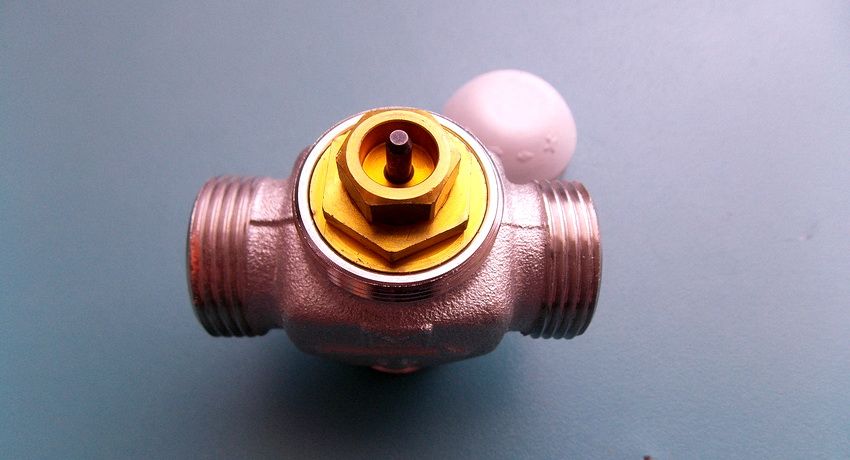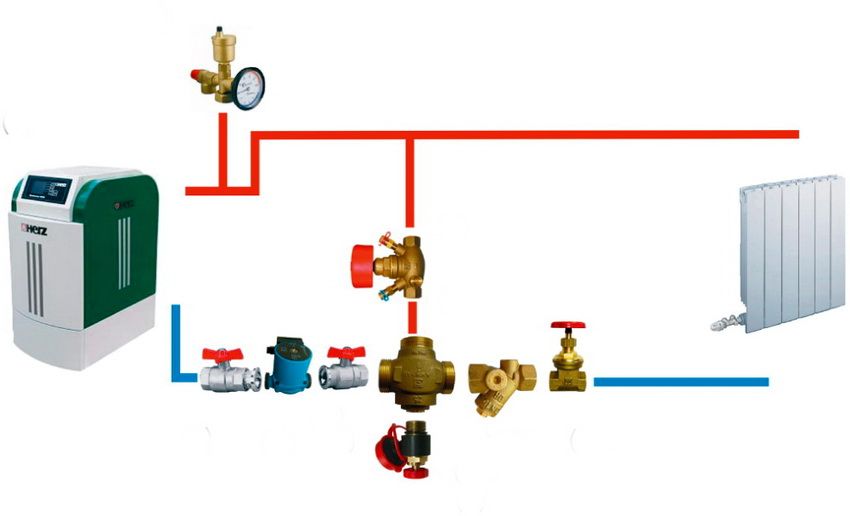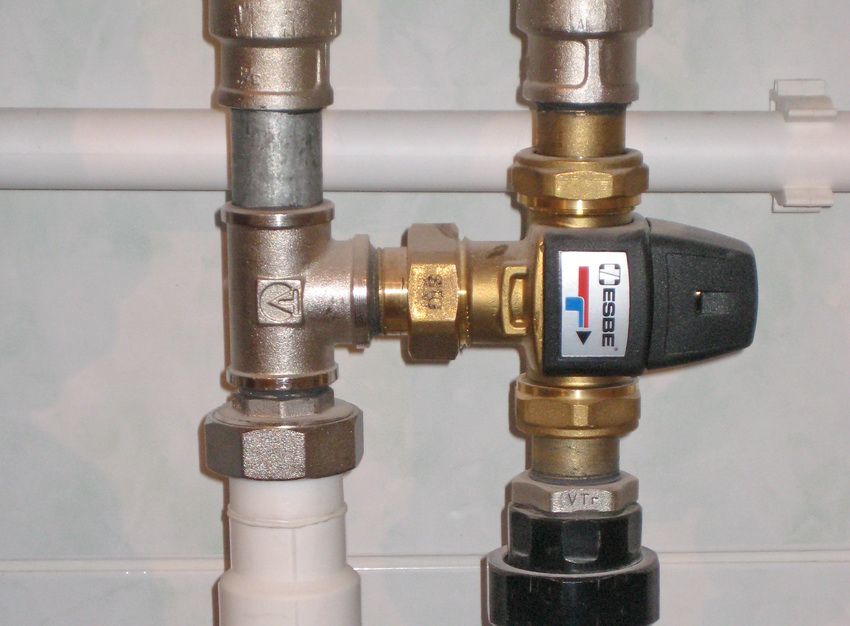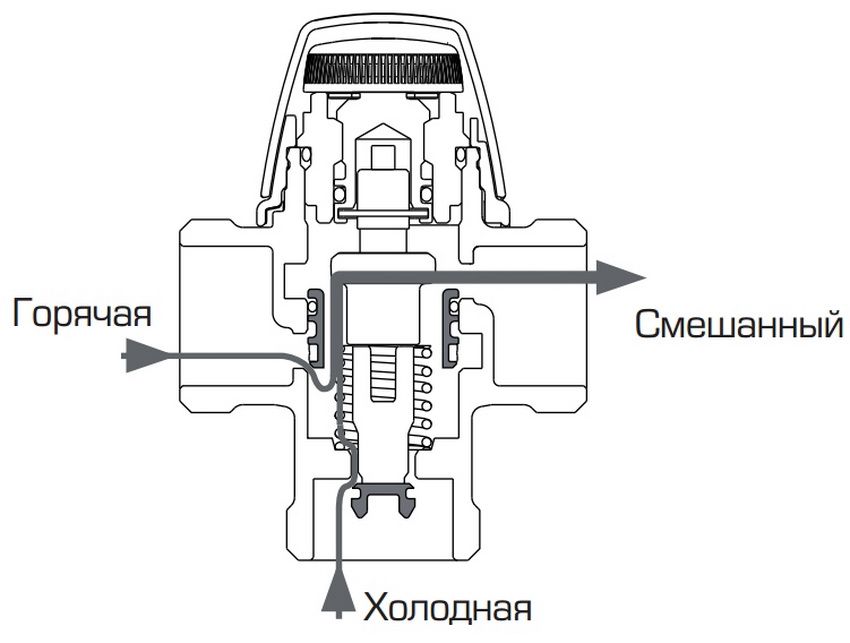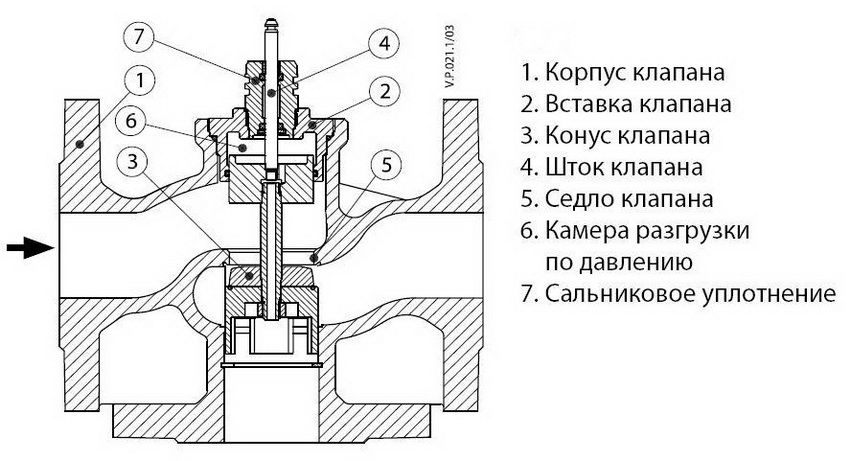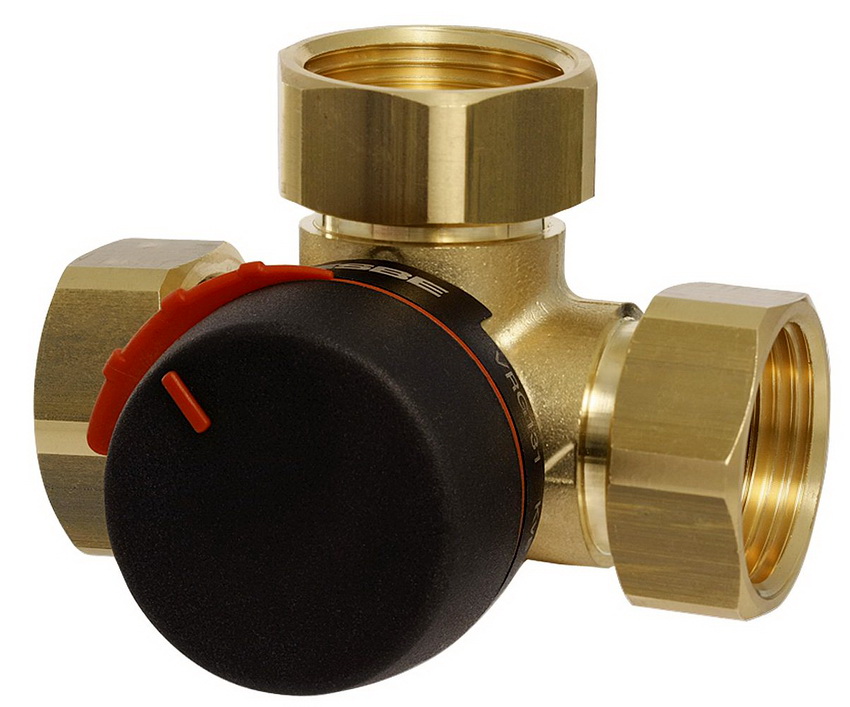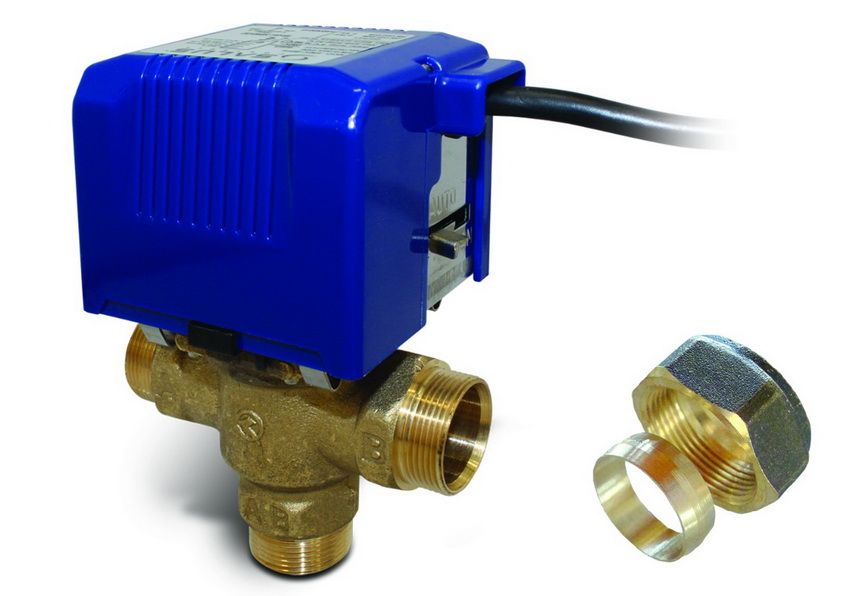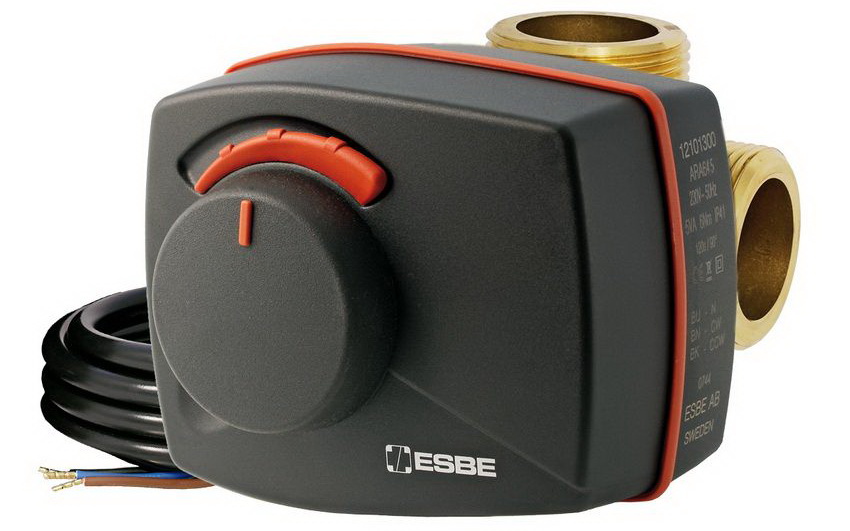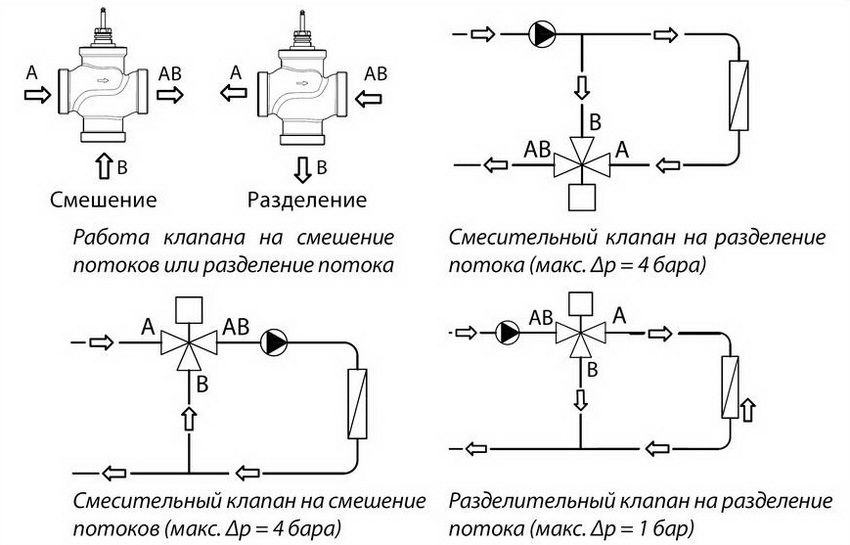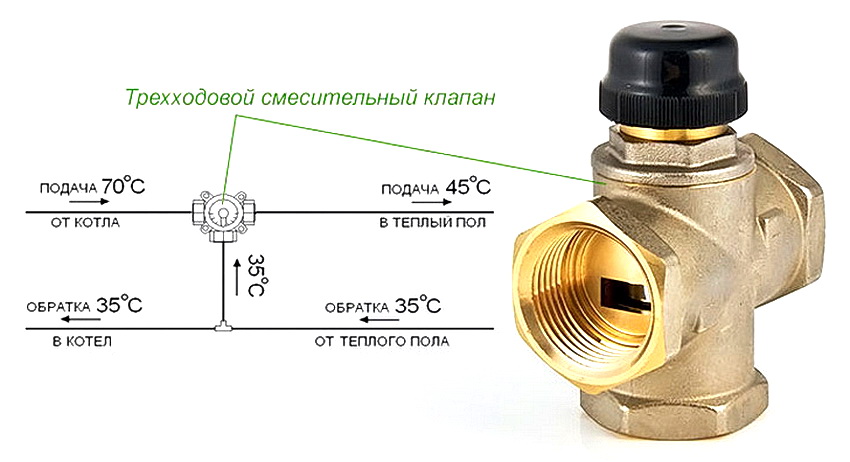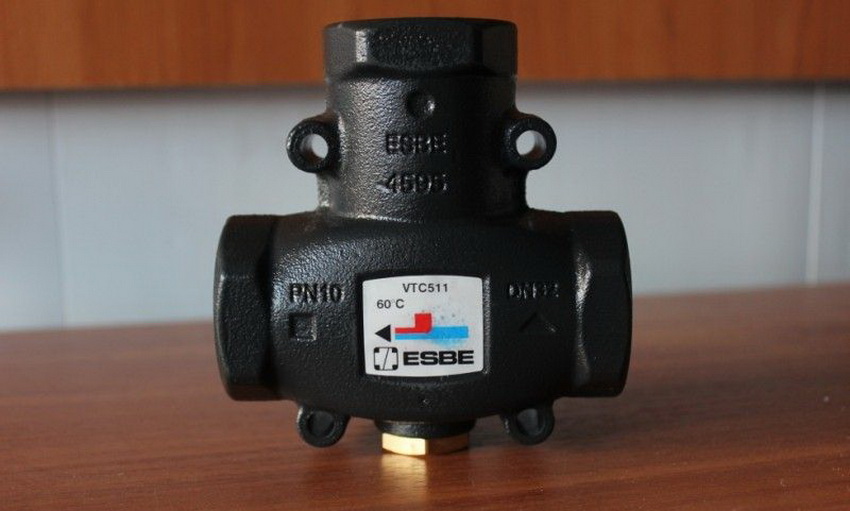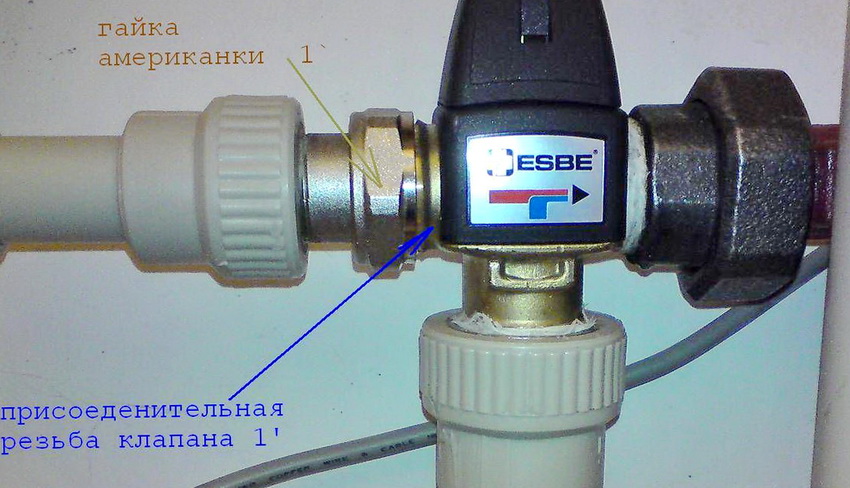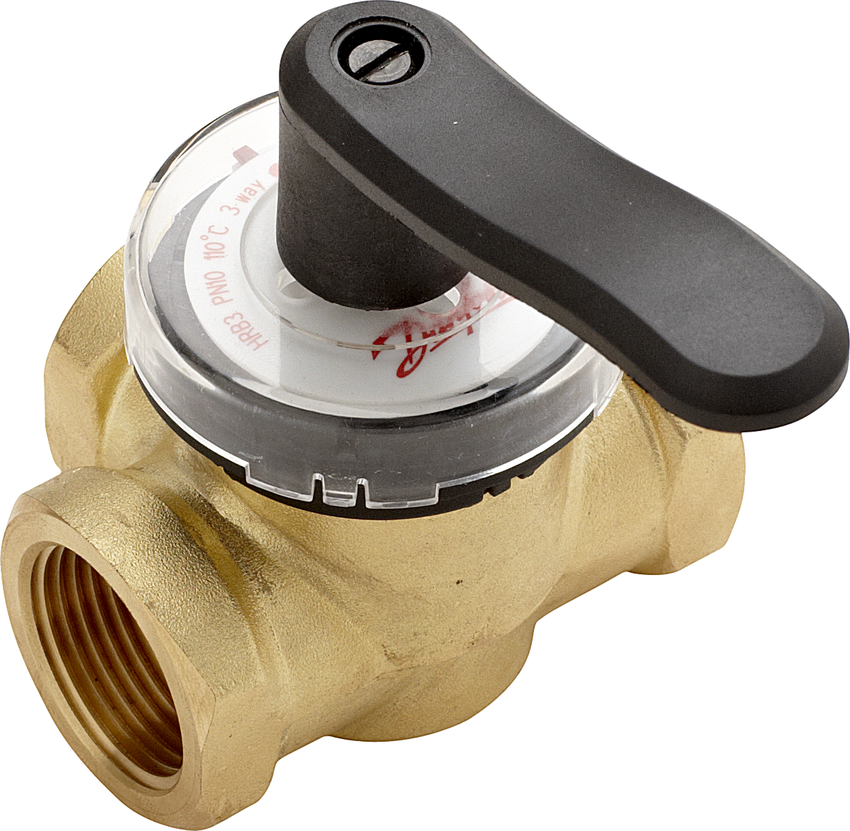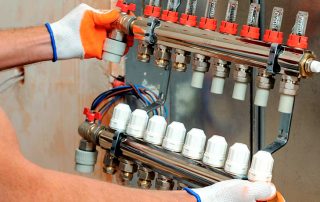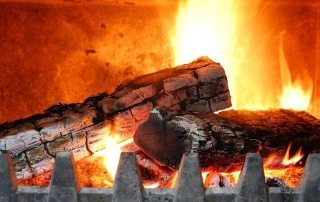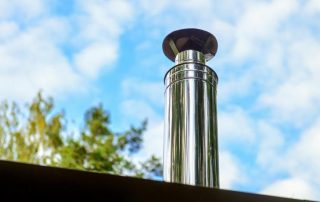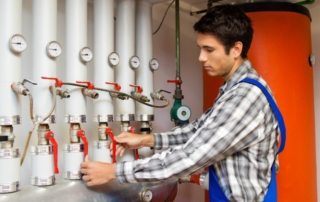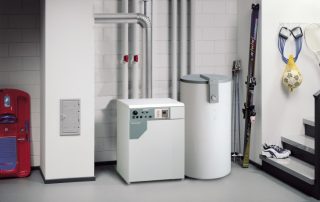One of the main pledges of comfort in the house in the cold season is the heat provided by the heating system. Today, a hot water heating system includes not only batteries, pipes and a boiler, but also less visible, but important elements. One of them is shut-off and control valves, in particular, a three-way valve for heating with a thermostat. Let's see why this part of the system is so important and what it is for.
Content
- 1 What is the responsibility of a three-way valve for heating with a thermostat
- 2 Maintaining a comfortable temperature with a three-way valve for heating
- 3 Three-way valve device for heating
- 4 Three-way valve actuator types
- 5 Electrically operated 3-way valves: features and benefits
- 6 Three-way valve for heating with a thermostat: principle of operation and purpose
- 7 Choosing a three-way valve: features of models from different companies
What is the responsibility of a three-way valve for heating with a thermostat
The thermostatic valve guarantees the practicality and efficiency of the system. Three-way valves for heating are designed to regulate the heat flow, which ensures indoor comfort and economic use.
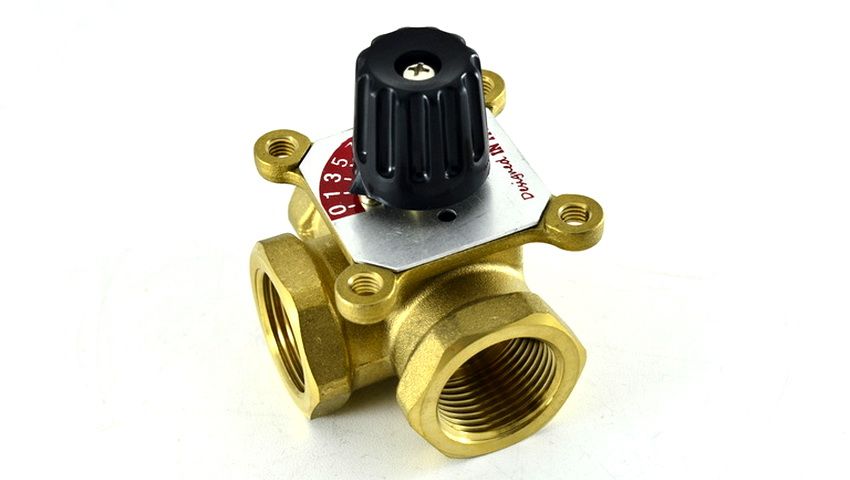
The three-way valve ensures the efficiency and economy of the heating system by regulating the heat flow
Why regulate heat flow
Before proceeding with the design of the heating system, a thermal calculation is performed. Based on its results, a suitable power and type of heating devices are selected that can maintain an optimal temperature regime in the room.
The area of the room is taken into account, after which possible heat losses are analyzed. Based on this, the capacity of the heating system is calculated, which is necessary to create a comfortable microclimate in the rooms.After that, a heat balance is compiled for all rooms.
However, these calculations are made under specific conditions that may change during operation. The factors affecting the operation of the radiator are different:
- temperature drops outside;
- solar Activity;
- wind strength;
- the presence of household appliances that generate heat.
As a result, the calculated temperature balance is upset, and the room becomes hot. However, it is impossible to remove parts of the radiator from the room or drown out the heat radiation. Thus, it becomes necessary to control the energy generated by heating devices in order to maintain a comfortable microclimate in the room.
Maintaining a comfortable temperature with a three-way valve for heating
There are two ways to regulate the energy released by the radiator:
- A qualitative change in the properties of the radiator.
- Quantitative regulation of the generated heat.
In both cases, manipulations with the liquid circulating through the pipes are necessary.
Qualitative change in the properties of the radiator
In order to regulate the microclimate in the room, you can switch the heat generator to another operating mode - as a result, the temperature of the water entering the radiators changes.
You can switch the mode on a wall-mounted boiler, if we are talking about a country house. However, the situation is much more complicated in the case of the boiler house of the urban microdistrict.
Helpful advice! In the case of a city apartment, when you do not have access to the boiler room, it remains to regulate the energy already released by the coolant.
Quantitative regulation of heat flow with a three-way valve for heating with a thermostat
In the case when you cannot influence the temperature of the water supplied to the radiator, you can adjust its amount. For this, it is necessary to buy three-way valves for heating with a thermostat. These devices allow you to limit the amount of water passing through the radiator, and as a result, with the same area of the battery, more or less heat will enter the room, of course, within the limits limited by the power of the system.
The three-way valve for the heating system and the temperature controller installed on the radiator can be used separately, but in autonomous heating systems of modern apartments and private cottages, a combined method is often used to increase efficiency. Thus, it is advisable to purchase a three-way valve for heating with a thermostat.
Heat flow adjustment limit
It is important to consider that the principle of operation of the three-way mixing valve allows you to increase or decrease the temperature of the radiator only within the established limits. These limits are dictated by the technical characteristics of the thermal device, namely, the value of its maximum heat transfer, and depend on each specific radiator.
Three-way valve device for heating
To understand how three-way valves work in a heating system, it is important to understand its structure.
Visually, this device looks like an ordinary metal tee. Brass is usually used as a material for the manufacture of the valve, sometimes cast iron or steel is taken. There are three branch pipes in the device body.
However, inside the tee there is a mechanism on which the principle of operation of three-way valves is based. It automatically regulates heat flows, allowing you to maintain a comfortable microclimate in the room.
The principle of operation of three-way valves in the heating system, depending on the type of actuator
There are two types of actuators that affect the operation of a three-way valve in a heating system.
Three-way valve actuator types:
| Actuator type | Principle of operation | Device |
| Saddle actuators | Equipped with a piston rod that moves progressively up or down. | Inside the body there is a seat closed by a cone, which is fixed at the end of the working rod. |
| Rotary actuators | Equipped with a ball or sector that rotates. | The stem does not move vertically, but the actuator scrolls it so that the movement of the ball with an opening, as in ball valves, opens or, on the contrary, partially blocks the communication between the nozzles. |
Helpful advice! For domestic use, you can choose a valve with a closing working part-sector or with a ball: such models are optimal for cases where resistance to extremely high temperatures and high flow rates are not required.
Three-way valve actuator types
An external drive is responsible for moving the working rod. There are several varieties of this part of the system.
Three-way thermostatic mixing valves
According to the principle of operation, three-way thermostatic valves are divided into:
- direct acting valves;
- indirect valves.
Most often, this type of valve is used in domestic installations, and the price of a three-way thermostatic valve is lower than that of other types of this equipment.
This type of device functions as follows: when the temperature of the thermal device changes, the expanding liquid of the "bellows", the temperature-sensitive element, presses on the working part of the device, the stem. The thermal head of the three-way valve is also located here, but this element is not present in all devices.
A probe located inside the pipeline can also act as a sensor in such a valve.
Three-way valves with electric drive
Various elements act as an electric drive for three-way electrically driven control valves. There are two types:
- three-way valves for heating with an electric drive in the form of an electric magnet;
- three-way valves with a servo drive based on an electric motor.
The actuator receives a command directly from the temperature sensors or from the control controller. Models of three-way valves for heating with an electric drive are most effective, as they allow you to provide the most accurate regulation of heat flows.
Helpful advice! You can buy three-way valves for heating without a standard drive, and then choose the most suitable option for your purposes.
Electrically operated 3-way valves: features and benefits
Regardless of the position of the stem in the three-way valve, circulation does not stop, therefore this type of device is not suitable for reducing the flow rate of the coolant. This is the main difference between a three-way ball valve with an electric drive and two-way valves, regulators and other devices.
The principle of operation of a three-way valve with an electric actuator
This valve is designed for mixing or separation, distribution of flows. The separating valve regulates the amount of water by letting some of the liquid through the bypass path instead of the straight path. Two branch pipes of the device serve for the outlet, and one for the inlet.
The principle of operation of a three-way mixing valve with a thermal head is based on mixing a colder one to a hot heat carrier or a hot one to a colder one.As a result, the qualitative characteristic, namely the temperature of the heat flux, changes, and the level of this change depends on the established proportion of the connected jets.
Related article:
Do-it-yourself water heating of a private house, design diagrams
How to make water heating in a house with your own hands. Construction drawings. The difference between natural and forced water circulation.
Two ports for input and one for output can also perform splitting function. These valves can be used in a variety of ways.
It is often relevant to use three-way valves for solid fuel boilers, in the chamber of which condensate falls at the beginning of the furnace. In this case, the valve helps to temporarily cut off the cold water, and let some of the heated liquid along the short circuit.
Three-way valves for underfloor heating and other uses
There are several options for using this type of valve:
- Three-way mixing valves for underfloor heating are installed to prevent overheating of individual veto systems. As a result, the water-heated floor heats up evenly, which contributes to a comfortable microclimate in the room, as well as the safety of the system.
- The purchase of three-way valves for solid fuel boilers allows you to cope with the situation when condensate falls in the boiler chamber at the beginning of the furnace.
- Three-way valves are installed in the heating system to separate flows and feed the DHW circuit.
- Three-way devices are used for bypass piping of radiators.
- The valves are optimal for creating a short circuit during return preparation.
Three-way valve for heating with a thermostat: principle of operation and purpose
Thermostats are installed on the radiator plugs. If necessary, these devices completely or partially block the coolant flow. The valve performs the same function, however, if you have a thermostat, you set the required parameters once, after which the thermo valve maintains the set temperature independently. Electronic thermal valves provide the highest accuracy and functionality.
It is important to understand that the thermostat is not able to change the initial power of the heat source, but it allows you to competently manage thermal energy and create comfortable conditions in the room.
Helpful advice! In the case of cast iron batteries, the use of a thermostat is meaningless, since the thermal inertia is too high. As a result, although the price of a three-way valve for heating with a thermostat is higher than the usual price of a three-way mixing valve, a temperature controller significantly improves the usability and efficiency of the device.
The principle of operation of the thermostat
The temperature controller is a two-way device consisting of two main parts:
- valve ("valve");
- thermal head.
Thermostat device:
| Element | Function | Device | Operating principle |
| Valve (valve) | Locking mechanism | Consists of seat, cone and stem. | The working stem retracts, reducing the seat-to-plug distance and thereby reducing flow. On the contrary, as the distance between these parts increases, the flow increases. |
| Thermal head | Rod control | The “bellows” (special cylinder) contains a thermosensitive substance. | The principle of operation is based on the expansion of gases and liquids in the event of heating. Under the action of the hot coolant, the substance in the bellows expands, pushing the spring-loaded piston. It acts on the stem with a cone towards the seat.
With a decrease in the coolant flow, cooling occurs and, accordingly, a decrease in the volume of the active substance. The spring returns the piston, cone and rod to their place and the flow is increased. Repetition of the cycle allows you to regulate the degree of heating of the radiator with high precision. |
Helpful advice! The efficiency of the thermostat is based on the accuracy and speed of response of the thermal head to the setting of modes and their change. The faster this reaction, the better the device is, and the higher the price of a three-way valve will be.
Varieties of thermostats for a radiator
There are several types of classification of thermostats for a three-way valve.
Classification of thermostats according to the method of setting the temperature and controlling the temperature regime:
| Thermostat type | Features: |
| Mechanical thermostats | The device is preset using a graduated knob. The stem is driven by a bellows and a return spring. |
| Manual thermostats | The principle of operation is similar to a conventional crane. This model can be easily replaced with a regulator for automatic operation of valves under changing conditions. |
| Electronic thermostats | Possess a digital panel. Batteries serve as a source of energy. Take into account the temperature of the coolant. Allows to program the mode by time. |
Manual and mechanical thermostats can be classified according to the type of active substance in the bellows. A liquid or gas can be used as a temperature-sensitive substance in the bellows, respectively, thermostats are:
- liquid;
- gas.
Also, thermostats are divided by purpose. Depending on the features, thermostats are designed:
- for two-pipe distribution systems;
- for one-pipe distribution systems.
According to the connection method, thermostats are:
- corner;
- straight lines.
Choosing a three-way valve: features of models from different companies
To choose a suitable valve, it is necessary to compare all the characteristics of different models, namely the type of actuator, type of actuator, the presence and type of thermostat, as well as the manufacturer and price of a three-way valve for heating. It is worth paying attention to models from leading manufacturers.
Esbe three-way valves: installation instructions and features
Among the main advantages of Esbe models are simplicity and affordable cost.
Helpful advice! If you need to adjust the valve, discard simple models, the main drawback of which is the inability to stabilize the outlet temperature.
When installing the valve, take into account a number of features:
- The mixing unit allows you to create an additional circuit in the system, connected to the distribution manifold by two points, which guarantees continuous circulation of the outlet water.
- At the inlet, the flow is ensured in case of additional heat demand.
- A valve with a thermostat is connected to the mixing unit.
- To increase the flow rate of pumping equipment, which is often insufficient due to the narrowness of the valves converging at one point, an additional line is required to reduce the power consumption of the pump. However, such measures are not relevant for all Esbee models.
- If there is a need for a second line, it is planned to install a balancing valve or connect the pump to this additional line, which leads to equalization of the temperatures of the inlet and outlet flows.
Three-way valves Navien: features and benefits
The Navien company specializes in the production of heating boilers. The three-way valves of this equipment are designed to change the priorities between heating water for water supply and the heating system. These valves are worth buying if you have Navien equipment, because components and equipment from one manufacturer are the key to long and efficient operation of the system.
Danfoss 3-way valves: features and benefits
Danfoss valves are used in heating and water supply systems.Among the advantages of this type of equipment:
- stability and accuracy of regulation;
- perfect compatibility with other Danfoss thermostatic elements;
- reliability and long service life without loss of performance;
- ease of installation, maintenance and operation;
- fully automatic work;
- the possibility of installation on the pipeline in any position, except with the valve down.
Having carefully studied the technical characteristics and tips for choosing a three-way valve for heating systems, you can choose the right device for a specific room and operating conditions.
